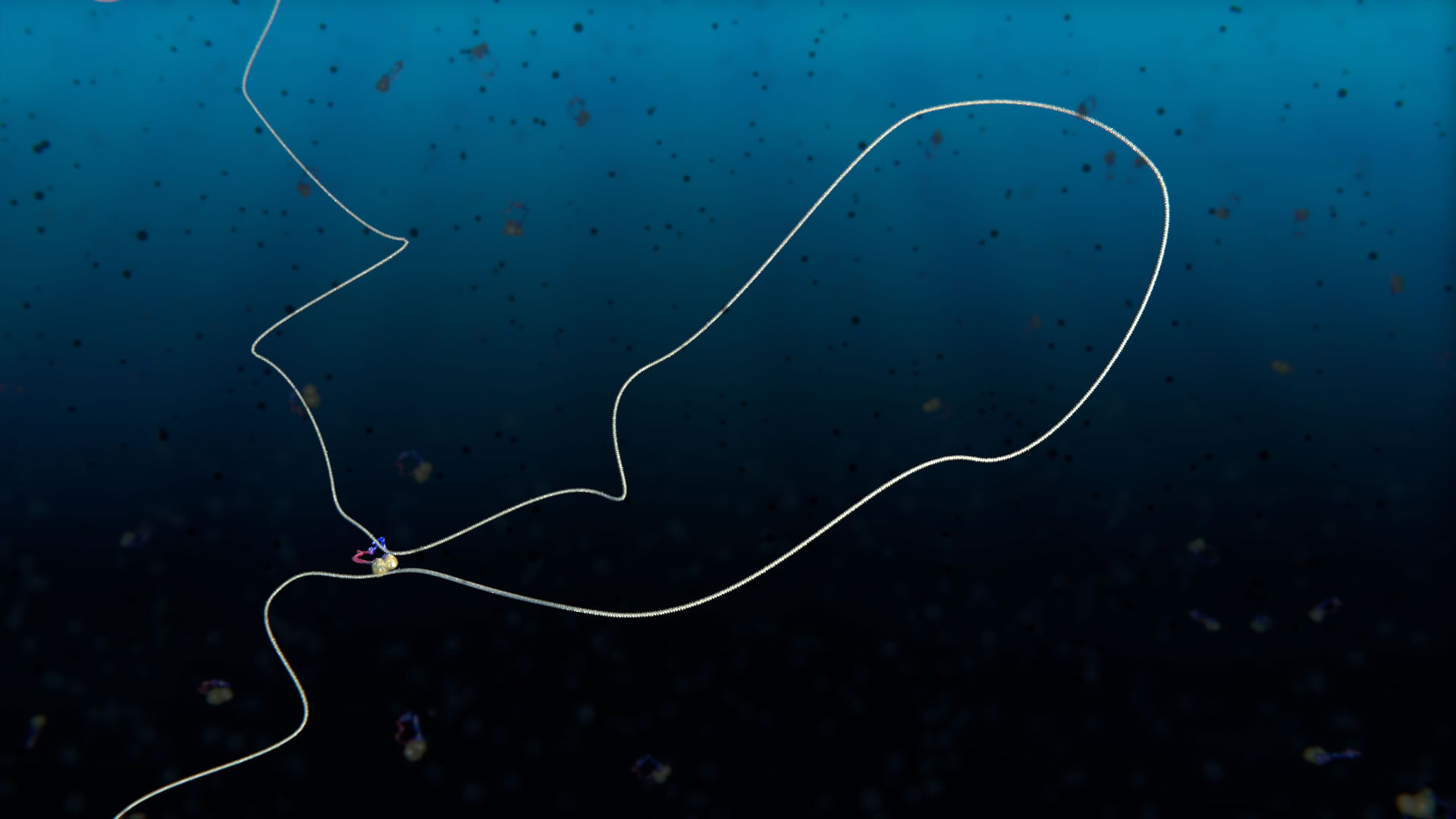Researchers from the Kavli Institute of TU Delft and EMBL Heidelberg filmed how a single protein complex called condensin reels in DNA to extrude a loop. By extruding many loops in long strands of DNA, a cell effectively compacts its genome so it can be distributed evenly to its two daughter cells. The findings were published online in Science on 22 February.
The discovery resolves a heated debate in the field, as it finally answers a question that has been discussed in biology for over a century: before dividing into two, DNA in a cell is comparable to spaghetti – a seemingly messy mixture of intermingled strands. The cell needs to organise this jumble of chromosomes to be able to divide its DNA neatly over both daughter cells. For many years, it has been clear that a protein complex called ‘condensin’ plays a key role.
Condensin’s active role was discussed earlier in an article by Dr Jorine Eeftens from the Cees Dekker Lab last year. Researchers had shown that condensin played a role in packing the DNA together. But, until now, biologists were divided on exactly how it does this.
One theory states that condensin works like a hook that grasps and connects DNA within the jumble of DNA, thus tying them together. Another theory suggests that the ring-shaped condensin pulls the DNA strand inwards to create a loop. The Science article shows that the second theory in which condensin pulls in loops of DNA, is correct.
Scientists from the Cees Dekker group at the Kavli Institute of Delft University, together with the Christian Haering group from EMBL Heidelberg (who established the purification and fluorescent labelling of the protein) managed to film the condensin complex in the act – that is, while it was extruding a loop of DNA.
“We simply proved it by filming it,” says Dr Mahipal Ganji, a postdoc in the group of Professor Cees Dekker at Delft. “DNA is such an entangled mishmash, that it is very difficult to isolate the process and study it in cells. In our study, the first step was to fix the two ends of a DNA molecule onto a surface and put colour dyes on the DNA and condensin. By then applying a flow in the fluid perpendicular to the molecule, we oriented the DNA in a U-shape and brought it into the focal plane of our microscope. Amazingly, we could then see a single condensin bind and start extruding a loop.”
Professor Cees Dekker adds, “This settles the debate. These data provide compelling evidence that condensin indeed reels in DNA to form loops.” The looping speed was found to be remarkably high: condensin can reel in up to 1,500 base pairs of DNA per second.
Dr Ganji, who succeeded in making the DNA molecule fluorescent, said that condensing has, in fact, two functions. One is condensing the DNA into a loop (hence the name), the other is to keep the DNA from getting all tied up into inextricable knots.
How exactly the protein complex condensin reels in the DNA remains unclear. Prof. Dekker said there was another postdoc working on revealing that particular mechanism.
- Mahipal Ganji, Indra A. Shaltiel, Shveta Bisht, Eugene Kim, Ana Kalichava, Christian H. Haering, Cees Dekker1, Real-time imaging of DNA loop extrusion by condensing, Science, 22 February 2018.
Real-time imaging of DNA loop extrusion by condensin’, Science First Release 22 Feb 2018
Heb je een vraag of opmerking over dit artikel?
j.w.wassink@tudelft.nl


Comments are closed.